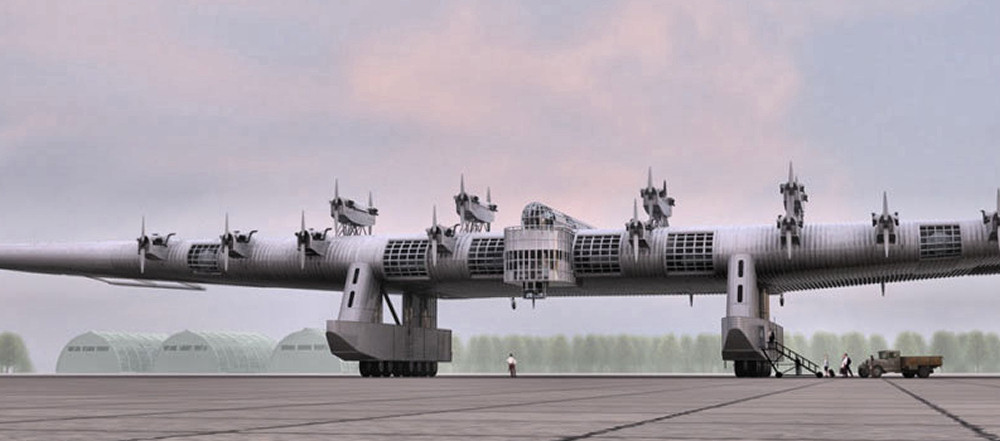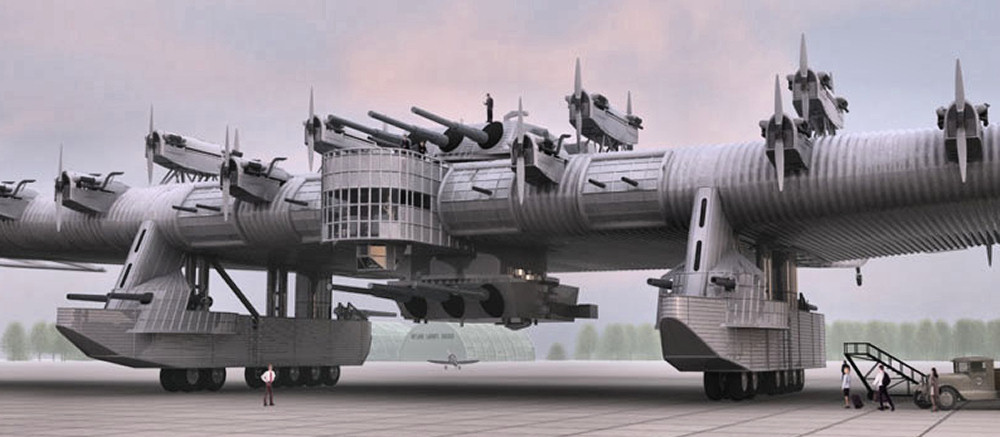 Designed
by World War I aviator Konstantin Kalinin
with a wingspan greater than a B-52’s and a much greater wing area, the
K-7 was one of the biggest aircraft built before the jet age. It was
only one engine short of the B-52 as well, having the curious
arrangement of six pulling on the wing leading edge and one pushing at
the rear.
OH!
You might want to view this Blog before you get too excited - TAILSPINS
TAILS.
In the 1930s the Russian army was obsessed by the idea of creating huge planes. At that time they were proposed to have as many propellers as possible to help carrying those huge flying fortresses into the air, jet propulsion has not been implemented yet.  This
additiion of Cannons may be a graphics hoax, but maybe not. Cannons
have awful thrust power.
 The Kalinin K-7 was the closest any aeroplane has come to being a real “flying fortress.” This giant with a wingspan of 173 feet had eight gun positions and could have carried up to 16 guns. It had a bomb load of 32,187 pounds, 12,000 more than a B 29! Powered by no less than seven Mikulin M34 F engines the K-7 could cruise at a speed of 112 mph and had a range of nearly 1,000 miles. Basically a flying wing with two booms the aircraft was built at a time when the “wing was the thing.” Like the Junkers G-38 and the Tupolov ANT-20 the wings were used to contain many of the features usually associated with the fuselage. The K-7 only had a short nacelle to house the flying crew but the wings could accommodate troops or cargo as well as a 19 ton bomb load. The huge aircraft was mounted on two large gondolas containing three wheels each. These also served as the access to the the aircraft by means of stairs in the front columns and ladders in the rear columns. The giant aeroplane used servo trim tabs to control all the control surfaces. Undaunted by this disaster, Kalinin’s team began construction of two further K-7s in a new factory, but the vicissitudes of Stalin’s Russia saw the project abandoned, and in 1938 the arrest and execution of Kalinin on trumped up espionage and sabotage charges. |